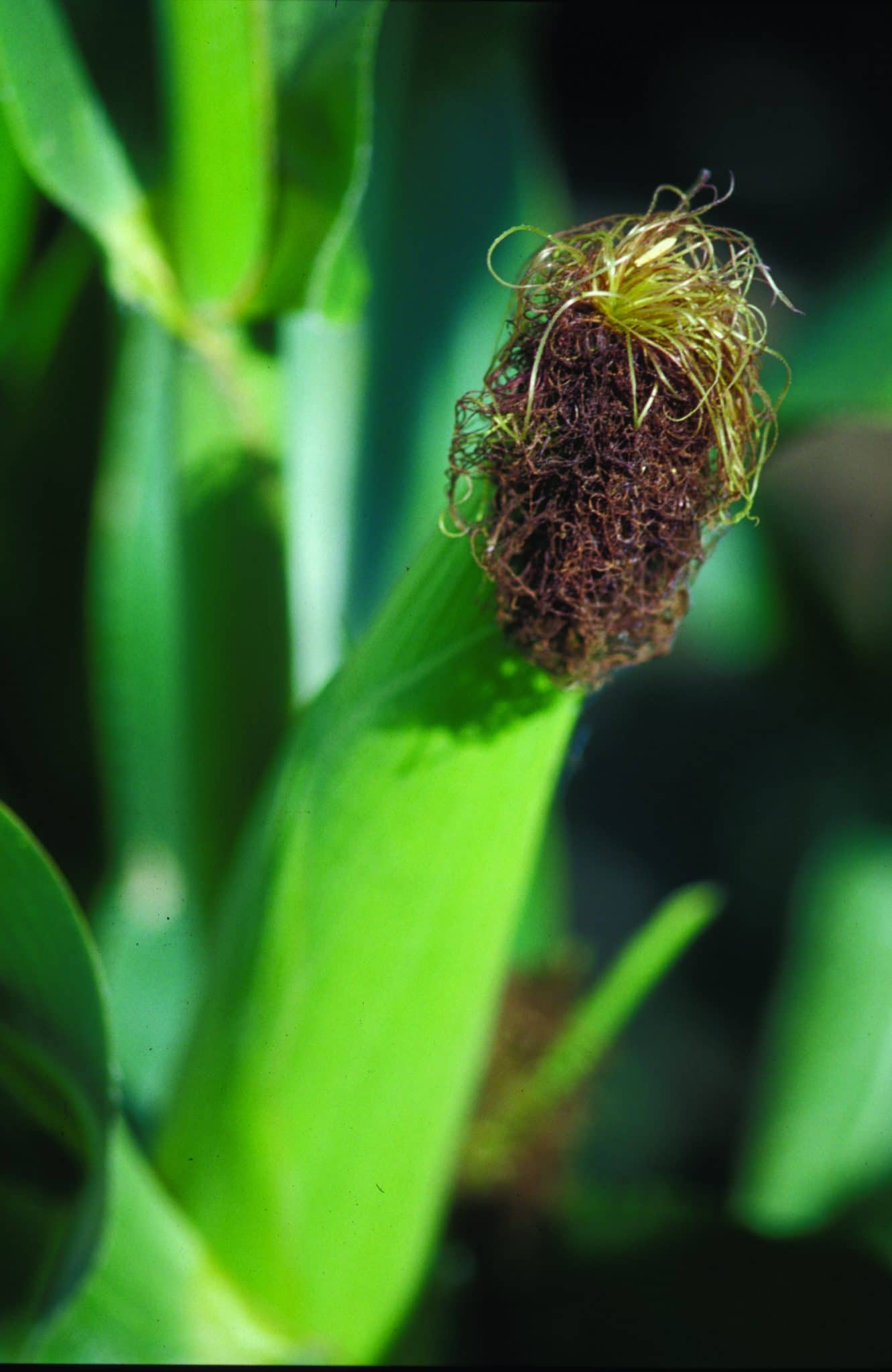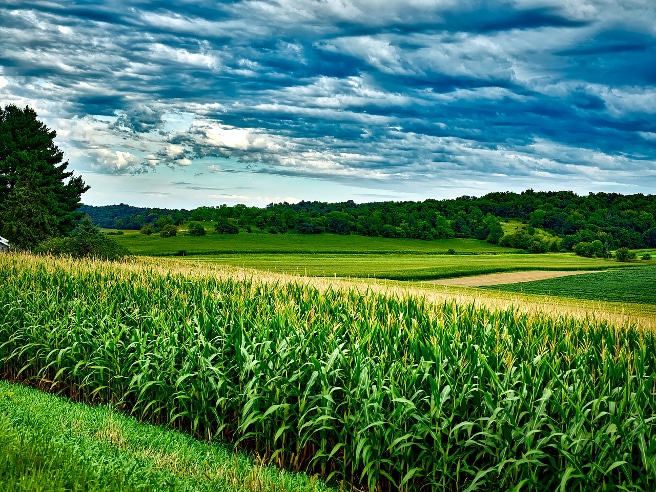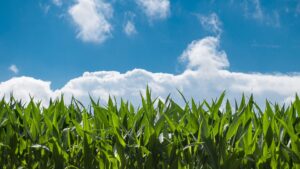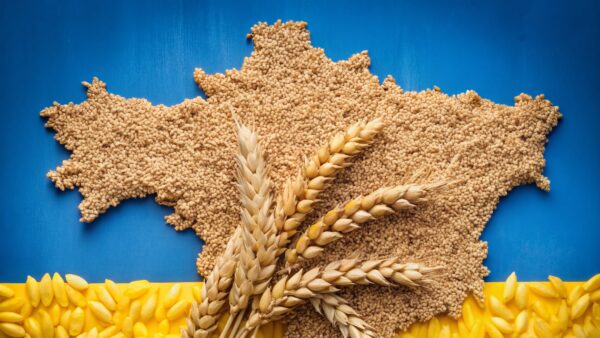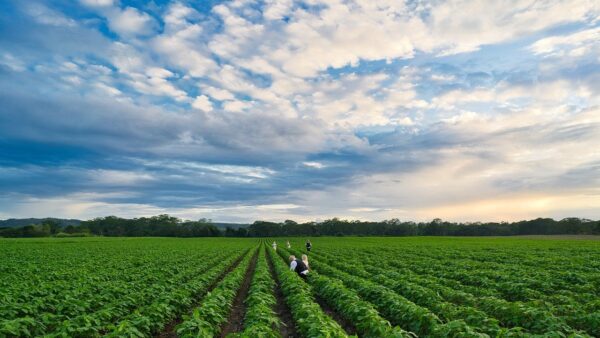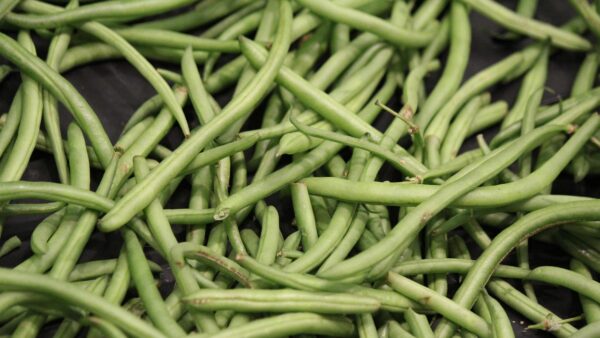Plant pathologists working at universities across 26 corn-producing states in the United States and in Ontario, Canada, compiled data about annual corn reductions caused by diseases. Estimated loss from each disease varied greatly by region.
“This group of plant pathologists takes a step back to estimate what has gone wrong in corn fields in each of their states,” said Iowa State University plant pathologist Daren Mueller, who was involved in this project. “Collectively, and across years, corn disease loss estimates provide folks a zoomed out view of what diseases are affecting corn in the U.S. and Canada.”
To Mueller, these data represent one of the pieces of a good research project. Researchers can use these data to justify new research projects that can help mitigate the impacts of certain diseases. These data can also serve as a benchmark to measure the impact their research might have on corn production.
“It’s interesting to compare the losses over the years,” Mueller said. “We started doing these estimates in 2012.” Mueller is also encouraged by the excellent collaboration among scientists across so many states.
The last four years of their data are compiled in an article recently published in Plant Health Progress. According to Mueller, “If you grow, breed, scout, study, eat, or really anything with corn, it is good to know what can go wrong when growing the crop. This article provides an overview of the effect of diseases on corn over the past four years.”
Disease loss estimates were provided by U.S. and Canadian members of the Corn Disease Working Group after the end of each growing season from 2016 to 2019. States and the Canadian province of Ontario were divided up into a “southern” and a “northern” geographic region. The northern region consisted of Colorado, Illinois, Indiana, Iowa, Kansas, Michigan, Minnesota, Nebraska, New York, North Dakota, Ohio, Pennsylvania, South Dakota, Wisconsin, and Ontario, Canada. The southern region consisted of Alabama, Arkansas, Delaware, Kentucky, Louisiana, Maryland, Mississippi, Missouri, North Carolina, Tennessee, Texas, and Virginia. A list of diseases was provided to plant pathologists annually. Respondents were asked to estimate percent losses for each disease and to include information about any relevant diseases not listed. Respondents used various methods to estimate corn yield losses caused by diseases, and most individuals relied on more than one method to obtain the most accurate estimate possible for each state.
The methods used for estimating corn yield losses caused by diseases varied by state or province as well as year and included estimates based on statewide or provincial disease surveys, feedback from university Extension, industry, and farmer representatives, plant disease diagnostic laboratory samples, research plots, personal experience with disease losses, and/or other methods. Disease loss estimates were primarily for hybrid corn harvested for grain. Estimates for losses from bacterial leaf streak (caused by Xanthomonas vasicola pv. vasculorum, [Cobb] comb. nov.) and tar spot (caused by Phyllachora maydis Maubl.) began in 2017 and 2018, respectively, as these diseases became more important risks to corn production. Estimates for Virginia and Alabama began in 2017 and 2019, respectively.
Yearly production in bushels (yield), crop value in U.S. dollars (USD), and number of planted acres for corn grown in each state or province were obtained from the U.S. Department of Agriculture, National Agricultural Statistics Service (USDA-NASS) and the Ontario Ministry of Agriculture, Food and Rural Affairs (OMAFRA), available at the time of writing. Total Ontario crop value in each year was determined by applying the U.S. national marketing year corn price to the total estimated production value in bushels from Ontario.
Disease loss values (bushels per acre) were determined based on yield before estimated losses as follows for each state or province: {bushels harvested/[(100, percent estimated disease loss)/100]}. Total bushels lost per disease was then calculated for each state or province: [(percent loss/100) × yield before estimated loss]. Losses in crop value in USD were determined similarly. Total per-acre losses in USD for each state or province were determined by dividing total estimated crop value losses by the number of acres planted.
Results and Implications
The current survey represents 98.0% of the total corn produced in the United States and Ontario between 2016 and 2019. Total annual production in the states and province covered by this survey ranged from a low of 13.8 billion bushels (350.5 million metric tons) in 2019 to a high of 15.2 billion bushels (386.1 million metric tons) in 2016. Individual state and provincial production values varied widely from year to year.
The estimated corn production losses per year across all states and Ontario, Canada, combined were 10.8, 6.7, 10.9, and 6.8% for 2016, 2017, 2018, and 2019, respectively. The average of these values is slightly lower than the average of yearly production losses reported from 2012 to 2015, which ranged from 7.5 to 13.5%. Estimates of total corn production losses due to diseases differed greatly by state or province and year, from negligible yield loss in Mississippi in 2017 to 22.8% in Ohio in 2016. States that produced more corn generally had greater estimates of loss due to disease. Indiana, Kansas, and Ohio were observed to have the greatest estimated average percent yield losses from the states that provided data for all four years of this study, whereas estimates from Mississippi, Texas, and Arkansas were the lowest. Yield loss estimates do not account for potential grain contamination or rejection as a result of mycotoxins because contaminated or rejected grain is likely still used in some capacity, but it may be discounted or used in ways other than originally intended.
Loss of bushels of corn is a more useful indicator than percent production loss. A 1% loss during a year with lower production is different than a 1% loss during a more productive year. Similarly, a 1% loss in a major production state differs in total magnitude compared with a 1% loss in a state with lower corn production. Total estimated bushels lost for each year was 1.8 billion (45.7 million metric tons) in 2016, 1.1 billion (27.9 million metric tons) in 2017, 1.8 billion (45.7 million metric tons) in 2018, and 1.0 billion (25.4 million metric tons) in 2019. Yearly estimated bushel losses were substantially greater in 2016 and 2018 than in 2017 and 2019, with losses appearing cyclical in nature. Greater estimated losses in 2016 and 2018 had much to do with Iowa, which reported greater bushel losses than any other state because Iowa produces more grain than any other state and disease was severe. To illustrate this, the average reported percent yield losses to corn diseases across all states and Ontario were 7.9% in 2016 and 6.9% in 2018, whereas yield losses reported in Iowa were 16.4% for 2016 and 18.6% for 2018. The Iowa values were more than twice the average percent loss during these two years. Furthermore, Iowa values were 60% greater when compared with the average reported losses from the top four corn-producing states (Illinois, Iowa, Minnesota, and Nebraska), which also border Iowa. Iowa values were closer to the average percent loss for all states and Ontario, Canada, in 2017 and 2019, although they were still greater. However, there were other states that reported greater percent losses than Iowa in all years except 2018.
The estimated impact that each specific disease had on corn production in the United States and Ontario was highly variable by disease and year, ranging from approximately 5,000 bushels (127 metric tons) of yield loss due to crazy top (caused by Sclerophthora macrospora [Sacc.] Thirum., C.G. Shaw & Naras.) in 2017, to more than 482 million bushels (12.2 million metric tons) lost due to gray leaf spot (caused by Cercospora zeae-maydis Tehon & E.Y. Daniels) in 2018. Gray leaf spot also caused the greatest estimated yield loss out of all diseases, followed by Fusarium stalk rot (caused by Fusarium spp.). Most diseases cause some amount of yield loss every year, and certain years have increased disease development. Examples include anthracnose leaf blight (caused by Colletotrichum graminicola [Ces.] G.W. Wilson) and eyespot, which had much greater reported losses in 2016 compared with 2017 through 2019.
The most destructive diseases in the 14 northern United States and Ontario, Canada, varied little by year. Gray leaf spot caused the greatest yield loss among all diseases from 2016 to 2018 and caused the second greatest yield loss in 2019. Fusarium stalk rot was always in the top three most destructive diseases and caused the highest estimated yield loss of any disease in 2019. Gray leaf spot and Fusarium stalk rot were particularly devastating in 2018, with yield loss estimates substantially greater than any other disease across all years. Neither gray leaf spot nor Fusarium stalk rot were the greatest cause of estimated annual yield loss from 2012 to 2015, although they were always ranked within the top 10 most destructive diseases in the northern region. Other diseases commonly present in the top 10 most destructive diseases from 2016 to 2019 were anthracnose stalk rot and top dieback (caused by Colletotrichum graminicola), Fusarium ear rot (caused by Fusarium spp.), plant-parasitic nematodes (multiple genera), Goss’s wilt (caused by Clavibacter nebraskensis [Davis, Gillaspie, Vidaver & Harris] Nouioui et al.), and northern corn leaf blight (caused by Setosphaeria turcica [Luttr.] K.J. Leonard & Suggs). Tar spot, a recently observed disease in the United States, caused the third greatest yield loss in 2018. Some diseases, such as southern rust (caused by Puccinia polysora Underw.) or Diplodia ear rot (caused by Stenocarpella maydis (Berk.) B. Sutton), were estimated to substantially reduce corn yield on an intermittent basis.
Environmental conditions fluctuated from year to year and greatly impacted final yield, as well as disease incidence and severity. For example, in 2018, the midwestern United States experienced its fifth wettest fall since 1895, and Ontario, Canada, also experienced a wet fall in 2018. Wet weather created harvest difficulties for many farmers and likely contributed to higher-than-normal concentrations of mycotoxin contamination compared with other years. Another example is that of southern rust, which caused the greatest or second greatest estimated yield losses in the southern region in all years except 2018, when it was not even ranked among the top 10 yield-reducing diseases. Much of the estimated yield losses due to southern rust in the southern region occur in Missouri, which experienced severe drought conditions during the summer of 2018. These dry conditions likely contributed to a reduction in southern rust risk that year, because the causal pathogen requires moisture for infection.
Overall, from 2016 to 2019 the total estimated economic loss due to disease was US$20.1 billion in the United States and Ontario, Canada. Economic losses averaged approximately US$5.02 billion annually during the survey period. Because economic losses are tied to bushel losses, the pattern of estimated monetary losses was similar to that observed with bushel losses.
Source: https://apsjournals.apsnet.org/doi/full/10.1094/PHP-05-20-0038-RS


